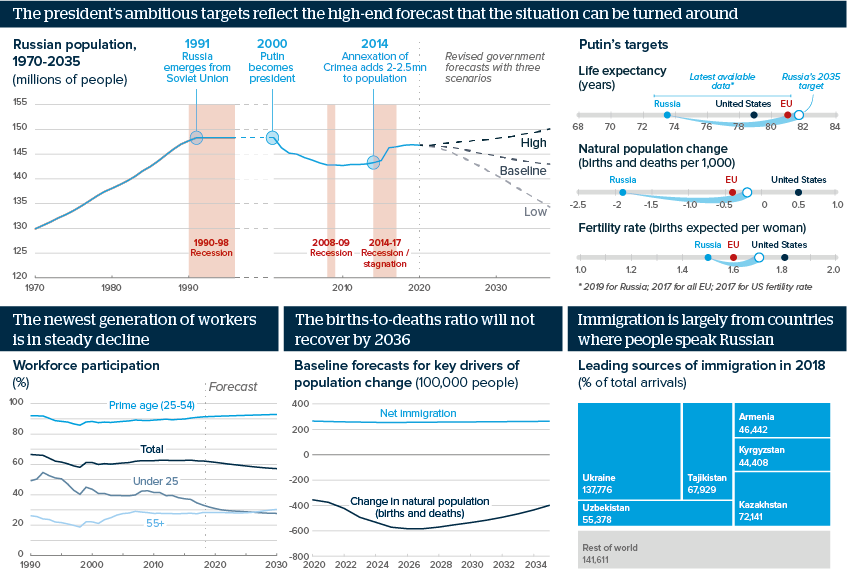Demographic action too late to fix Russia’s decline
Government measures will help future generations but the population will continue shrinking through 2035
Source: Rosstat; UN; Kommersant; TASS
Outlook
Demographic measures envisaged in the 2018 ‘National Projects’, augmented by extra childcare benefits announced in January, are intended to generate higher fertility rates and longer life expectancy to slow the pace of demographic decline as the relatively large post-Second World War generation disappears and the smaller number of women born in the 1990s means fewer babies are born.
Statistical agency Rosstat produced revised forecasts in December suggesting that President Vladimir Putin’s headline targets for 2035 will not be met. Remedial action seems unlikely to come soon enough to preserve the working-age population needed to boost productivity and hence economic growth -- Putin’s overarching goal.
Impacts
- Immigration from Russia’s former Soviet neighbours is the obvious solution to natural population shrinkage.
- Rosstat’s baseline forecast, with net immigration fairly flat, may reflect a reluctance to propose this politically unpalatable option.
- The pension age is being raised but this demographic is short of the skills and flexibility needed in an evolving labour market.
- Russia is aging: at 39.6, median age is nearly ten years above the global average and the UN expects it to peak at 44 in 2035-40.
